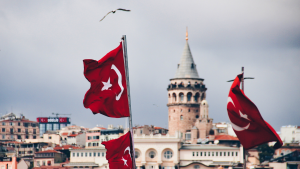On the occasion of the International Day for the Elimination of Violence against Women, the Independent Journalists’ Association of Serbia (IJAS) expresses deep concern over the pressures, threats and attacks against women journalists in Serbia, which have been increasing year after year. NUNS calls on the competent institutions to urgently ensure adequate punishment of perpetrators, and on media outlets to improve the position of women journalists and combat discrimination.
In the SafeJournalists database, IJAS recorded a total of 15 actual physical attacks on women journalists, 34 threats to life and physical safety, and 17 other threats and forms of harassment endangering their safety in the period from 2021 to 2024. According to the same data, the number of all types of attacks on women journalists in 2025 has clearly increased – while the total number of recorded attacks and threats for the previous three years was 66, by mid-November alone 56 cases had already been recorded: 24 physical attacks, 21 death threats and 11 other threats endangering the safety of women journalists. Women journalists are particularly vulnerable to online threats, including sexual harassment. Nevertheless, the Special Prosecutor’s Office for High-Tech Crime does not demonstrate adequate understanding of this type of harassment, as it often fails to recognise the elements of a criminal offence required for prosecution ex officio, nor does it treat such conduct as a criminal offence at all.
An IJAS survey shows that women journalists do not believe they can be protected solely through the formal observance of regulations and codes. Safety is possible only where there are strong institutions that consistently protect the right of women journalists to perform their work in accordance with the law. This is why they place more trust in the protection of the public and the solidarity of colleagues than in the protection of institutions. It is particularly worrying that women journalists in smaller communities are exposed to additional pressures, while psychological and legal support remains insufficiently accessible.
Some of the respondents also pointed to discriminatory behaviour within their own newsrooms – from inappropriate comments based on physical appearance, gender and sex, to unequal treatment and opportunities for advancement.
IJAS’ recommendations clearly highlight the need to improve the legal framework and institutional protection of women and men journalists, including amendments to the Criminal Code and the Law on Misdemeanours in order to introduce additional protection, especially in cases of the criminal offences of stalking and sexual harassment committed against women journalists. More efficient action by the competent institutions is necessary, with a gender-sensitive approach, as well as stronger solidarity within the journalistic community and the exchange of domestic and international good practices.
There is also a need for systemic strengthening of local media, as well as the use of mechanisms before the Commissioner for the Protection of Equality in cases of gender-based discrimination (e.g. unequal pay for the same work).
On the occasion of the International Day for the Elimination of Violence against Women, IJAS calls on colleagues, media outlets, civil society organisations and institutions to support efforts to improve the safety of women journalists. We invite you to sign the SafeJournalists Declaration on Improving the Safety of Women Journalists in the Western Balkans, so that we can jointly and clearly highlight the problems women journalists face in their work.
You can read the text of the Declaration at this link.
Independent Journalists’ Association of Serbia
Belgrade, November 25, 2025




